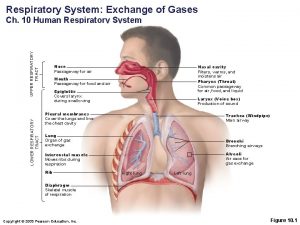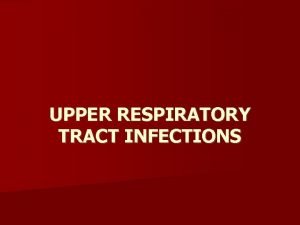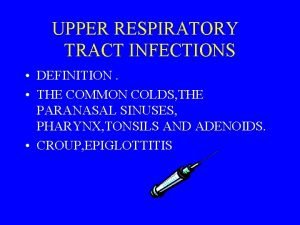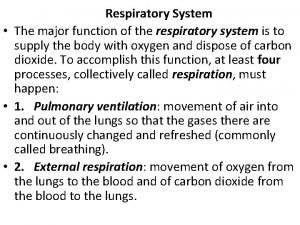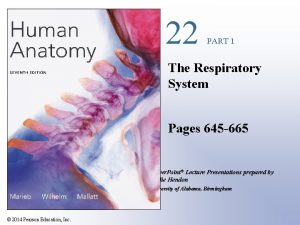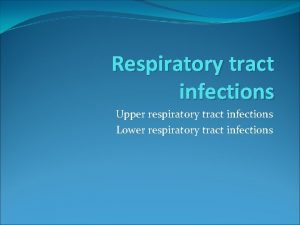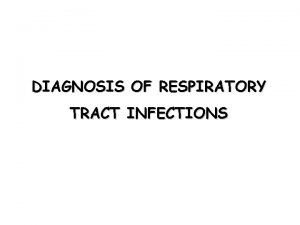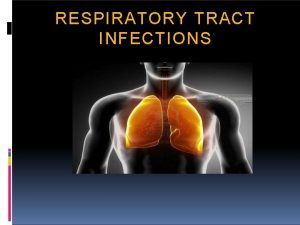Introduction and Upper Respiratory Tract Prof K Sivapalan





![Function of the Nose. Airconditioning • Air is warmed [surface-160 sq. cm] • Humidified Function of the Nose. Airconditioning • Air is warmed [surface-160 sq. cm] • Humidified](https://slidetodoc.com/presentation_image/207ab63e1142b664a72725dee6d7c380/image-6.jpg)

- Slides: 7

Introduction and Upper Respiratory Tract Prof. K. Sivapalan

Function of Respiratory System • Inspiration and expiration • Air conditioning. • Exchange of oxygen and carbon dioxide with atmosphere. • Acid base balance. • Filtration of blood. • Protection from harmful substances. • Speech. 2013 Upper Respiratory Tract 2

Upper respiratory tract 2013 Upper Respiratory Tract 3

Airways • Air reaches lungs through nose, pharynx, trachea, bronchi which are kept open by cartilage [muscles can obstruct] • Broncheols [d < 1. 5 mm] have no cartilage and change diameter in response to transpulmonary pressure and smooth muscle tone. • Smooth muscle responds to adrenergic, cholinergic and many other agents. 2013 Upper Respiratory Tract 4

Airway Resistance • Air way resistance depends on total cross sectional area. • Irritation of respiratory epithelium by noxious gases, dust, cigarette smoke and infections causes reflex contraction [parasympathetic]. • Histamine and slow reactive substance of anaphylaxis are released in the epitheliumbroncho constriction. • Oedema of the epithelium reduces diameter • Bronchial Asthma – Exercise induced asthma 2013 Upper Respiratory Tract 5
![Function of the Nose Airconditioning Air is warmed surface160 sq cm Humidified Function of the Nose. Airconditioning • Air is warmed [surface-160 sq. cm] • Humidified](https://slidetodoc.com/presentation_image/207ab63e1142b664a72725dee6d7c380/image-6.jpg)
Function of the Nose. Airconditioning • Air is warmed [surface-160 sq. cm] • Humidified • Filtered [partially]- hair, turbulent precipitation → Mucus → cilia to pharynx and swallowed. • [Particles > 6µ removed in nose, 1 -5 µ settle in smaller bronchioles due to gravity, smaller particles entre alveoli where precipitate or expelled by expiration] • Problem in tracheostomy- crusting and infection. • Small particles deposited in alveoli are removed by alveolar Macropharges or carried away by lymphatics. 2013 Upper Respiratory Tract 6

Protective Reflexes • Cough reflex- irritation to mucosa from larynx to alveoli or very light touch send afferent impulse in Vagus to cough centre in medula. • Sneeze reflex – by irritation to nasal epithelium 2013 Upper Respiratory Tract 7
